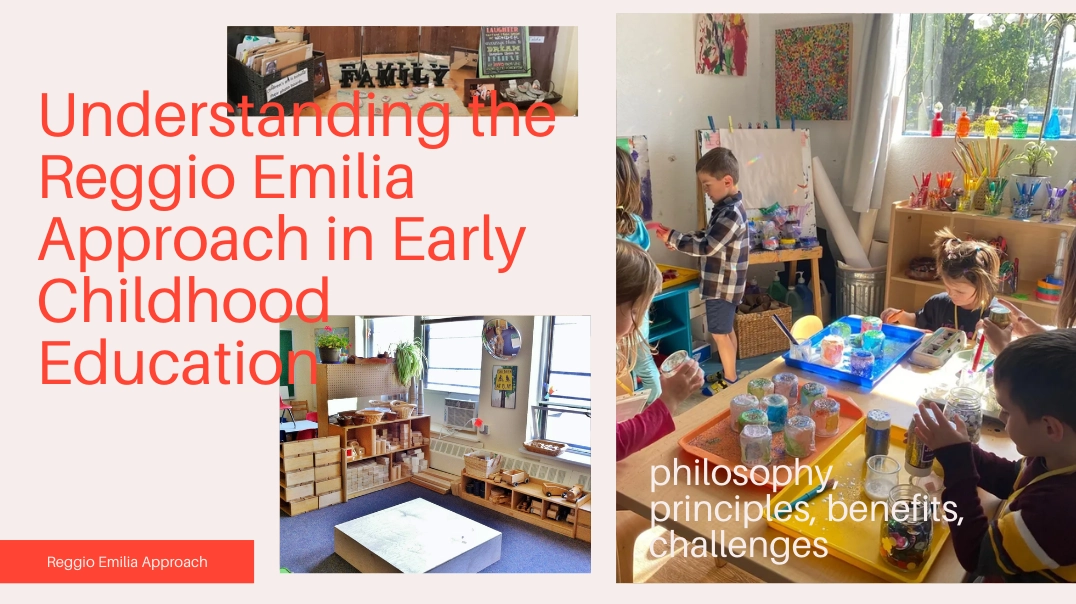The Reggio Emilia Approach is a globally respected philosophy of early childhood education that emphasizes creativity, collaboration, and child-led learning.
Unlike traditional education models that rely on fixed curricula and standardized testing, the Reggio Emilia Approach encourages children to express themselves through multiple forms of communication—known as the “Hundred Languages of Children.” It views young learners as capable, curious, and full of potential.
For example, in a Reggio-inspired classroom, a child might explore light, shadow, and reflection not through worksheets, but by using mirrors, projectors, and natural materials—guided by a teacher who observes, documents, and learns alongside them. This hands-on, inquiry-based method supports not only cognitive development but also emotional, social, and creative growth.
That’s why the Reggio Emilia Approach has become a powerful influence in early childhood education worldwide, valued for its flexibility, deep respect for the child, and ability to adapt to diverse learning environments.
Introduction
Early childhood education is evolving—and among the most respected and innovative philosophies leading this transformation is the Reggio Emilia Approach. Rooted in a deep respect for children’s curiosity, creativity, and competence, this approach has reshaped how educators and parents understand learning in the early years.
In this article, we’ll explore what the Reggio Emilia Approach is, where it came from, and how it differs from more traditional models of education. You’ll discover its core philosophy, how it’s implemented in classrooms, what makes it unique, and why it continues to inspire schools across the globe.
Whether you’re an educator, school leader, parent, or simply curious about progressive education models, this guide offers a clear and comprehensive introduction to the Reggio Emilia Approach—and why it might be the right choice for early learners today.
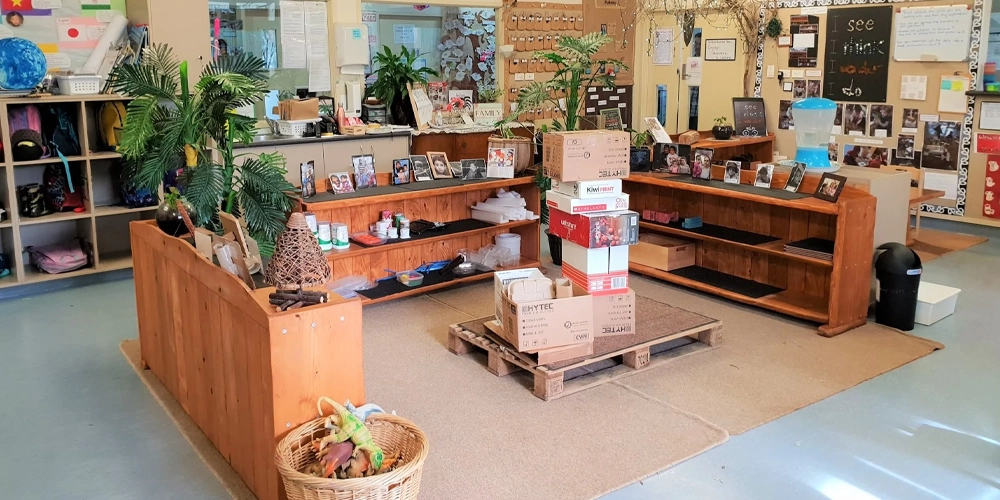
What is Reggio Emilia?
The term Reggio Emilia refers not only to a small city in Northern Italy, but also to one of the most influential early childhood education philosophies in the world. Developed in the aftermath of World War II, the Reggio Emilia Approach emerged from a local effort to rebuild society through a better model of education—one rooted in democracy, collaboration, and respect for the child.
The philosophy was pioneered by Loris Malaguzzi, a teacher and psychologist who, together with local parents, envisioned a new way of learning that would empower children to think critically, express themselves freely, and take an active role in their own development. They believed that education should be shaped by the community and serve as a tool for both personal growth and societal transformation.
Although it began as a grassroots initiative in the town of Reggio Emilia, this approach has gained international recognition for its depth, flexibility, and ability to adapt to diverse cultures. Today, Reggio Emilia represents both a geographical origin and a pedagogical identity—one that has inspired educators, researchers, and schools across the globe to rethink what early childhood education can and should be.
Reggio Emilia Philosophy
The Reggio Emilia philosophy is not a set curriculum or a fixed method—it is a deeply held belief system about how children learn, grow, and relate to the world. At its core, it views education as a process of building knowledge in relationship with others, with the environment, and with oneself.
The Image of the Child: Capable, Curious, and Co-Constructing Knowledge
In contrast to traditional educational views, the Reggio Emilia philosophy begins with a powerful premise: children are competent and full of potential. This concept, often referred to as the “image of the child,” rejects the idea of children as passive recipients of adult knowledge. Instead, children are seen as active participants in their own learning, capable of making decisions, expressing complex ideas, and collaborating meaningfully with peers and adults alike.
As Loris Malaguzzi, the founder of the Reggio Emilia Approach, wrote:
“The child has a hundred languages…a hundred ways of thinking, of playing, of speaking.”
This foundational belief shapes every element of the Reggio approach.
The 5 Core Principles of the Reggio Emilia Approach
While the philosophy is flexible and responsive to context, educators inspired by the Reggio Emilia Approach to early childhood education often align their practices with five central principles:
- Children as Protagonists
Learners are not just participants but leaders in the learning process. They generate questions, initiate projects, and build knowledge alongside teachers. - The Hundred Languages of Children
Children communicate through multiple modes of expression: drawing, storytelling, dramatic play, music, construction, movement, and more. These are all seen as valid and essential tools for learning. - Teachers as Partners and Researchers
Teachers are not authoritative transmitters of knowledge, but co-learners and co-researchers. They observe, reflect, and adapt to support children’s inquiry. - The Environment as the Third Teacher
Classrooms are designed intentionally as aesthetic, functional, and flexible learning spaces that provoke curiosity and invite exploration. The environment actively supports interaction and discovery. - Collaboration and Relationships
Learning is inherently social. Children, teachers, families, and even the broader community are engaged in a network of cooperative learning relationships.
Documentation as a Tool for Reflection
Although not always listed as one of the “five,” pedagogical documentation is central to the Reggio philosophy. Teachers capture the learning process through photos, transcripts, and visual displays—not simply to assess, but to understand how children think, represent, and revisit ideas over time.
This process of making learning visible helps children reflect on their growth, helps teachers plan meaningful experiences, and invites families into the learning journey.
An Evolving Educational Philosophy, Not a Fixed Model
It’s important to understand that the Reggio Emilia educational philosophy is not a one-size-fits-all method. It adapts to local contexts, community cultures, and the unique identities of schools and children. This flexibility is part of what makes it so powerful—and why Reggio Emilia–inspired schools around the world look and feel different, even while sharing common values.
How Children Learn in Reggio Emilia
The Reggio Emilia approach to learning transforms how we understand early childhood education. It views children as active participants, not passive recipients. Instead of simply listening to lessons or memorizing facts, children explore, ask questions, and build knowledge by interacting with people, materials, and the environment. This method is grounded in a deep respect for each child’s unique voice, creativity, and curiosity.
Unlike traditional education, which often relies on fixed lesson plans and teacher-led instruction, the Reggio Emilia curriculum is emergent. This means the learning path is co-created by children and teachers based on what genuinely interests the children and what they naturally explore in their daily experiences. It’s a flexible, evolving model that values process over product.
What is the Reggio Emilia Approach to Learning?
The Reggio Emilia approach to learning is built on constructivist theory, where children learn by doing and reflecting. Instead of being told what to learn, children are encouraged to investigate, collaborate, and make meaning in context. Learning happens through real-life situations, and knowledge is built together—with peers, teachers, families, and even classroom materials.
This co-constructed learning experience allows children to grow not just academically but emotionally and socially. Teachers act as co-learners and researchers, observing the children closely, documenting their progress, and guiding them without taking control.
Emergent Curriculum Guided by Children’s Interests
One of the core principles of the Reggio Emilia philosophy is that learning should begin with the child’s curiosity. In Reggio-inspired classrooms, teachers carefully observe children to identify their interests—what they say, do, and focus on—and then design project-based learning experiences around those themes.
These child-led inquiries often grow into long-term projects. For instance, if a group of children becomes fascinated with rain, their learning might evolve into building a water wall in the outdoor space, drawing rain cycles, measuring puddles, reading stories about weather, and interviewing family members about storms. This kind of learning integrates science, math, language, and art in one meaningful, playful experience.
Through this approach, the Reggio Emilia classroom environment becomes a laboratory of exploration, where learning feels natural, joyful, and self-directed.
Learning Through Exploration and Provocations
Teachers in Reggio Emilia settings often set up “provocations”—intentional materials or scenarios that invite children to explore an idea more deeply. These provocations can be as simple as mirrors and clay, or as rich as a construction area with wood, blueprints, and measuring tools.
The purpose is to spark questions, problem-solving, and hands-on exploration, giving children the freedom to experiment, test ideas, and build understanding in their own way. This method encourages critical thinking, independence, and creativity, which are all central to the Reggio Emilia approach to early childhood education.
Multi-Modal Expression: The Hundred Languages
A standout feature of the Reggio Emilia philosophy is the belief in the “Hundred Languages of Children.” This concept means children have many different ways to express themselves—not just through speaking or writing, but also through art, dance, music, sculpture, drama, and more.
In Reggio-inspired schools, these creative expressions are not considered extra activities—they are core parts of how children learn and communicate. Every classroom includes an atelier (art studio), led by an atelierista, where children use various media to explore their ideas and emotions.
This multi-modal expression helps children develop emotional intelligence, confidence, and complex thinking. It also gives educators and families a deeper view of each child’s learning process—far beyond test scores or worksheets.
The Main Features of the Reggio Emilia Approach
The Reggio Emilia approach to early learning is characterized by several unique and powerful features:
- Learning is Social and Collaborative
Children learn best in relationships—with other children, with adults, and with their environment. In Reggio classrooms, children often work in pairs or small groups to solve problems, build projects, and share ideas. This social learning environment supports not only communication and teamwork, but also empathy, patience, and self-regulation.
- Long-Term, Project-Based Inquiry
Projects are not one-off lessons—they can last days, weeks, or even months. These long-term investigations begin with a child’s question and unfold naturally over time. Children revisit their ideas, build on them, and reflect on their progress, developing deep understanding and ownership of their learning.
- Integrated Artistic Expression and the Atelier
Art is fully integrated into the curriculum, not treated as a separate subject. The atelier is a space for exploration through materials, and the atelierista helps children think and express through color, texture, shape, and form. This creative process is a form of thinking, not just creating.
- Documentation as Learning Dialogue
Teachers take photos, write observations, and collect children’s work to make learning visible. This pedagogical documentation is shared with the children, parents, and other teachers. It serves as a tool for reflection, helps plan future learning steps, and celebrates children’s growth in ways that standardized testing cannot capture.
The Role of the Teacher in Reggio Emilia
In the Reggio Emilia approach, the teacher’s role is very different from traditional models. Teachers are not the source of all knowledge—they are partners in learning.
Teachers as Researchers
Teachers closely watch how children act, speak, and create. They use these observations to understand what the kids are thinking and to plan next steps. They also meet regularly with other teachers to reflect, share ideas, and improve together.
Teachers as Co-Learners
Reggio Emilia teachers don’t act like experts—they join the children in discovering and exploring. This encourages kids to be curious and open-minded because they see their teachers learning too.
Teachers as Environment Designers
The classroom is called the “third teacher” in Reggio philosophy. Teachers arrange the learning environment with care—offering open-ended materials, cozy corners for reflection, and group spaces for collaboration. Every shelf, table, and wall serves a purpose in inviting learning.
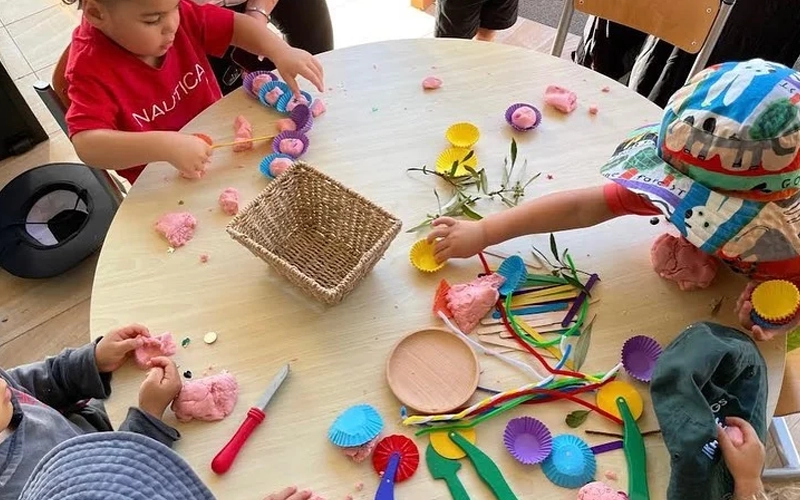
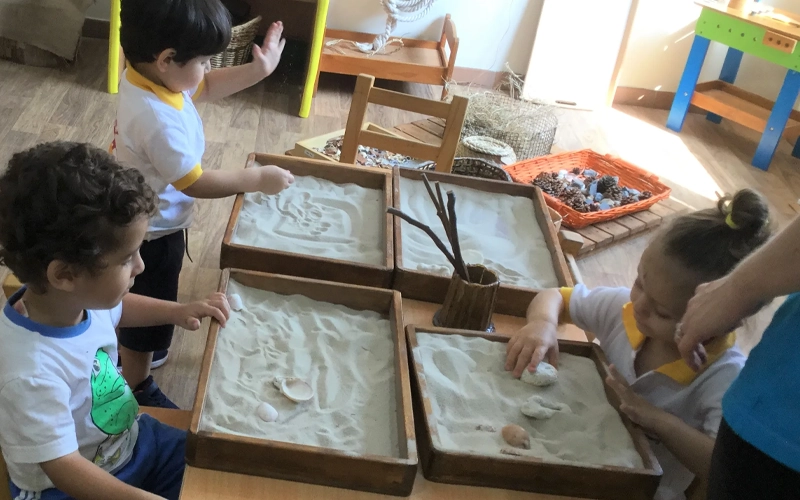
What Age Group Is the Reggio Emilia Approach Best For?
The Reggio Emilia Approach is widely recognized as one of the most influential philosophies in early childhood education. Originally developed for preschool-age children in the Italian city of Reggio Emilia, this approach continues to shape the way educators around the world think about how children learn best. But what specific age group does it serve most effectively—and can it be adapted beyond that range?
Primarily Designed for Early Childhood (Ages 0–6)
The Reggio Emilia approach was originally developed in municipal preschools in Reggio Emilia, Italy, for children between the ages of 0 to 6 years old. Therefore, it is most commonly implemented in nurseries, daycares, kindergartens, and pre-kindergarten settings.
- Infants and toddlers (ages 0–3):
In Reggio Emilia-inspired infant-toddler centers, even the youngest learners are viewed as competent, curious, and expressive. Learning environments are soft, nurturing, and sensorily rich. Teachers observe babies closely, allowing responsive relationships and emergent experiences to form naturally. - Preschoolers and kindergartners (ages 3–6):
This is the core age range for the Reggio Emilia educational approach. Children in this phase are rapidly expanding their language, motor, social, and emotional skills. The child-led, project-based learning style aligns perfectly with their developmental needs for exploration, expression, and collaboration.
Why the Reggio Emilia Approach Is Ideal for This Age Group
The Reggio Emilia philosophy emphasizes several learning principles that align closely with early childhood developmental milestones, making it particularly effective for young children:
- Play-based learning and symbolic expression (essential for early brain development)
- Rich sensory and material exploration (key to motor coordination and problem-solving)
- Language development through multi-modal expression (the “hundred languages”)
- Social-emotional growth through collaboration and dialogue
- Emergent curriculum that allows for attention span and curiosity to guide learning
In contrast to more rigid educational models, the Reggio Emilia approach adapts to the child’s evolving abilities, rather than forcing the child to adapt to a preset system. It fosters a love of learning, intrinsic motivation, and foundational cognitive and emotional skills.
| Age Group | Focus Areas | Learning Strategies | Role of the Teacher | Environment Features |
|---|---|---|---|---|
| 0–3 years (Infants & Toddlers) | Sensory exploration, emotional bonding, language beginnings | Observation-based planning, routines as learning opportunities, rich language exposure | Caregiver as secure base, close observation, responsive interaction | Soft materials, natural lighting, floor-level mirrors, safe exploration zones |
| 3–6 years (Preschool & Kindergarten) | Project-based inquiry, symbolic thinking, social collaboration | Long-term projects, provocations, multi-modal expression, storytelling | Co-researcher, facilitator of dialogue, project co-planner | Atelier for creative work, flexible group spaces, documentation panels, loose parts play |
Can Reggio Emilia Be Applied Beyond the Early Years?
While the approach is most commonly found in early years education, its values and principles have inspired some elementary schools and even programs for older children. However, certain components—like the open-ended curriculum and atelier-based learning—require adaptation for older age groups who may face more structured academic requirements.
Some educational institutions have explored Reggio Emilia-inspired elementary programs, focusing on:
- Inquiry-based learning
- Student-led projects
- Interdisciplinary collaboration
- Reflective documentation
Yet, it is important to recognize that the Reggio Emilia approach was not originally designed for upper grades, and as such, it may not align with the standards-based curriculum and assessment-heavy models found in most primary and secondary education systems.
Reggio Emilia in Mixed-Age and Inclusive Settings
Another strength of the Reggio Emilia Approach is its flexibility across developmental stages. Many Reggio-inspired schools group children in mixed-age classrooms, allowing younger children to learn from older peers, and older children to develop empathy, leadership, and mentoring skills.
The approach is also highly effective for children with special educational needs, as its individualized, observation-based methods allow educators to meet each child exactly where they are.
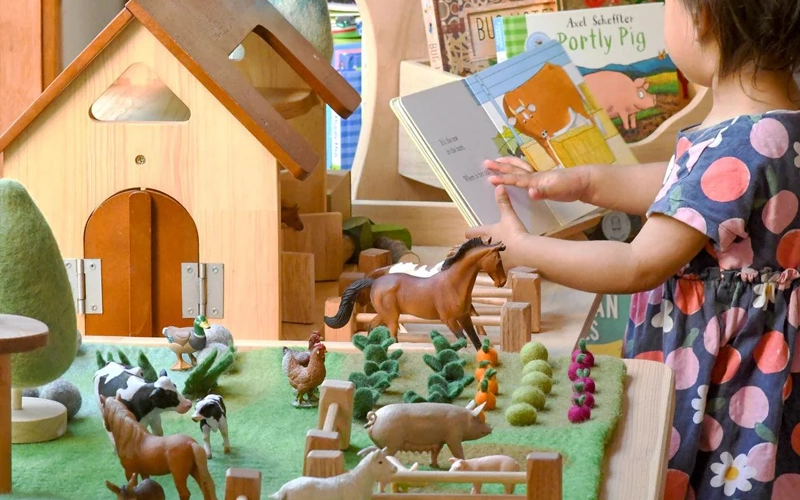
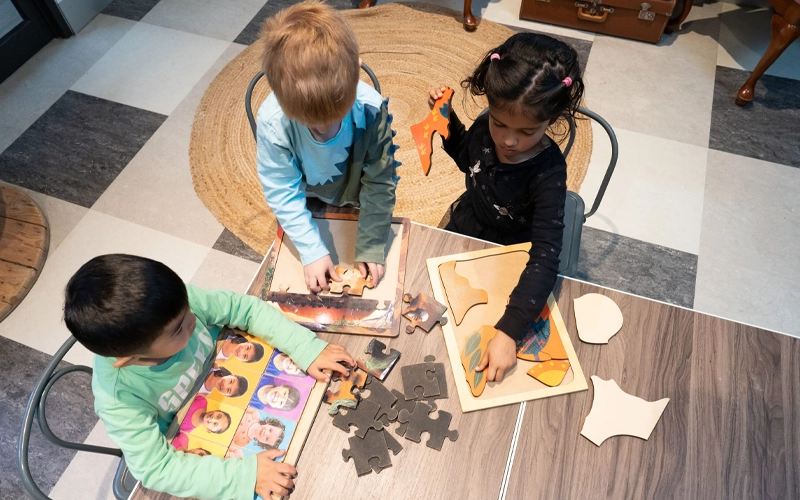
What Makes Reggio Emilia Different from Traditional Education?
Many people wonder: How is the Reggio Emilia approach different from what most of us experienced in school? The answer is—it’s different in just about every way.
Instead of following a set curriculum or preparing kids for tests, Reggio Emilia encourages children to explore their interests, ask questions, and learn through real-life experiences. Here are a few key ways it stands apart:
No Standardized Testing or Grades
In traditional classrooms, kids are usually measured by grades and formal tests. These systems often push everyone to learn the same thing at the same time.
Reggio Emilia doesn’t use tests or grades. Instead, teachers observe how children think, ask questions, and solve problems. They document progress through photos, quotes, and project work. This way, the focus stays on how each child learns—not how well they perform on a test.
Learning Follows the Child’s Curiosity
Most school systems use a fixed syllabus. Teachers plan every lesson in advance and expect students to follow along.
In Reggio Emilia classrooms, learning is more flexible. Teachers listen carefully to what children talk about and build learning around those interests. If a group of kids becomes fascinated with insects, that might become a full class project—with drawing, storytelling, science, and even math all tied to the topic. The learning comes from the children, not just the adults.
The Classroom Isn’t Just a Room—It’s a Teacher Too
You won’t find rows of desks and a blackboard in a Reggio-inspired space. Instead, classrooms are designed to be warm, beautiful, and full of materials that invite kids to explore.
In Reggio thinking, the environment is the “third teacher”—alongside the adults and other children. Every corner, shelf, and object is intentional. Spaces are designed to make children feel confident, curious, and capable.
Teachers Learn Alongside Children
In many traditional classrooms, the teacher is the expert who gives instructions, while students follow along.
In Reggio Emilia, teachers act more like guides or learning partners. They ask open-ended questions, help children reflect, and often explore topics together with the class. It’s a relationship based on trust and curiosity, not authority.
Families Are Part of the Process
Parents in Reggio-inspired schools aren’t just invited to school events—they’re part of the learning journey. Teachers often share photos, stories, and progress updates, and parents can contribute ideas and participate in projects. This builds a strong home-school connection that helps the child feel supported on all sides.
In short, traditional education often focuses on what students should learn, while Reggio Emilia focuses on what students want to learn. It sees children as capable, creative, and full of potential—and builds the learning experience around that belief.
Reggio Emilia vs Traditional Education
| Key Area | Reggio Emilia Approach | Traditional Education |
|---|---|---|
| Curriculum | Based on children’s interests; flexible projects | Pre-set curriculum decided by adults |
| Teacher’s Role | Learning partner, guide | Instructor, authority figure |
| Assessment | Observations, photos, portfolios | Standardized tests and grades |
| Learning Style | Child-led exploration and questions | Teacher-led lessons and answers |
| Classroom Setup | Designed to inspire learning (the “third teacher”) | Rows of desks, more rigid setup |
| Family Involvement | Parents collaborate and participate | Limited parental role |
| Self-Expression | Many ways to express ideas—art, play, music | Mostly speaking and writing |
The Reggio Emilia Approach stands out because it looks at education in a completely different way. Instead of following a fixed plan, it lets learning grow naturally from children’s curiosity. Teachers aren’t just instructors—they learn with the kids. Families are invited to take part, and classrooms are designed to support every step of learning. This approach shows us that children are not empty vessels to be filled, but capable individuals with unique ideas and voices. That’s why more and more educators around the world are rethinking how learning should really happen.
Comparing Reggio Emilia with Other Approaches
When it comes to early childhood education, three teaching philosophies are often discussed together: Reggio Emilia, Montessori, and Waldorf. While they all put the child at the center of learning, each approach offers a very different experience in the classroom.
If you’re a parent or educator trying to choose what’s right for your child—or your school—understanding these differences really matters.
Reggio Emilia vs. Montessori
Montessori education, developed by Dr. Maria Montessori in the early 1900s, is built around independence, hands-on learning, and a very structured environment. Everything in a Montessori classroom has a purpose, and children are encouraged to work on tasks by themselves at their own pace.
Reggio Emilia, on the other hand, is more open-ended, social, and creative. The classroom is designed to inspire exploration, and learning often happens through long-term projects based on what the children are curious about.
| Key Feature | Reggio Emilia | Montessori |
|---|---|---|
| Curriculum | Emergent, based on children’s interests | Pre-set, follows specific learning sequences |
| Teacher’s Role | Co-learner and collaborator | Guide and observer |
| Environment | Flexible, creative, full of expressive materials | Calm, organized, with specific learning tools |
| Social Learning | Strong emphasis on collaboration and group work | Focus on independent work and self-discipline |
| Materials | Recycled, open-ended, artistic | Purpose-built Montessori materials for math, language, and practical skills |
| Assessment | Documentation, reflection, portfolios | Observational tracking of progress through materials |
Montessori classrooms are wonderful for kids who enjoy order, repetition, and focused work. Reggio settings may be a better fit for kids who love storytelling, drawing, building things together, and sharing ideas in groups.
Reggio Emilia vs. Waldorf
Waldorf education, founded by Rudolf Steiner, is a more spiritually grounded approach. It puts a strong focus on rhythm, imagination, and natural materials. Waldorf teachers often tell rich, moral-based stories, and subjects are introduced through art, movement, and music, especially in the early years.
Reggio Emilia shares Waldorf’s appreciation for creativity and art, but the philosophies differ in structure and intent. Reggio values spontaneous, interest-driven learning. Waldorf believes in structured storytelling and slow developmental unfolding.
| Key Feature | Reggio Emilia | Waldorf |
|---|---|---|
| Philosophy | Children construct knowledge through exploration and relationships | Education is guided by the child’s spiritual and emotional development |
| Curriculum | Emergent, flexible, based on real-time interests | Pre-planned yearly themes based on nature, folklore, and seasons |
| Art & Creativity | Child-led, expressive, tied to project work | Teacher-guided, stylized, and woven into the rhythm of the day |
| Role of the Teacher | Observer and co-explorer | Moral guide and storyteller |
| Use of Technology | Can be included if meaningful | Strongly discouraged in early years |
| Materials | Open-ended, varied, sometimes recycled | Natural, handcrafted, soft textures and earthy colors |
Waldorf classrooms feel calm, rhythmic, and rich in tradition. Reggio settings feel vibrant, curious, and always evolving. Both are beautiful in their own way.
So, Which Approach Is Better?
There’s no one-size-fits-all answer. The right approach depends on the child and the context.
- Reggio Emilia is great for creative, social learners who like to ask questions and explore ideas with others.
- Montessori is ideal for focused, independent thinkers who enjoy structure and working quietly on tasks.
- Waldorf supports children who are imaginative, sensitive, and thrive with rhythm, storytelling, and emotional connection.
Blending Educational Philosophies: The Modern Reality
In today’s classrooms, it’s rare to find schools using only one method. More and more, educators combine elements from different philosophies to create what works best for their children.
For example:
- A Reggio-inspired classroom might include Montessori shelves to encourage practical skills.
- A Waldorf setting might borrow Reggio-style documentation to showcase learning.
- Some schools may follow a Montessori curriculum but add project-based group work inspired by Reggio Emilia.
This kind of blending doesn’t water down the ideas—it enriches them. It helps teachers respond to real needs in real time, while still respecting each child’s unique way of learning.
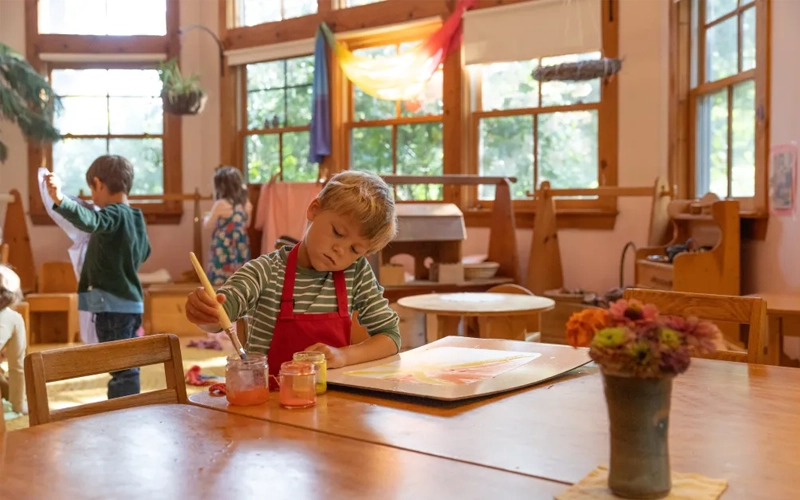
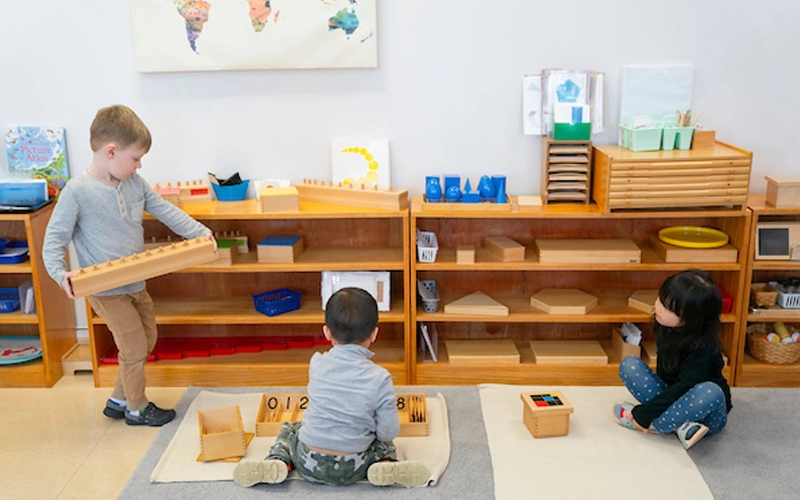
Exploring the Approach in Your Own Practice
Educators who are inspired by the Reggio Emilia Approach often ask the same question: How can I bring these ideas into my own teaching practice? While the philosophy is rooted in Reggio Emilia, Italy, its principles can be applied anywhere with thoughtful adjustments. This section explores practical ways to introduce the Reggio Emilia Approach into everyday teaching—starting small as an individual teacher, and then extending it to the design of the classroom and collaboration with families.
How You Might Begin to Explore This Approach in Your Own Teaching
Start with Observation
In the Reggio Emilia Approach, everything begins with careful observation. Instead of rushing to prepare a lesson plan, teachers spend time watching what children are naturally drawn to. Observation is not only about what children say, but also about what they do—how they play with blocks, how they use materials, or even how they interact with one another. Each of these small moments provides insight into their curiosity and thought process.
By practicing this kind of observation, teachers in a Reggio-inspired classroom learn to see beyond surface behavior and begin to understand the deeper questions children are asking. For example, if children are constantly building towers and knocking them down, this may reflect an interest in balance, gravity, or cause and effect. Instead of correcting the behavior, a teacher following the Reggio Emilia Approach would design experiences to explore those ideas further.
Practice Documentation
Documentation is one of the strongest tools in the Reggio Emilia Approach. It goes beyond taking notes—it is a way to make learning visible. Teachers collect photos, drawings, quotes, and even small artifacts from children’s daily activities. These records are then displayed on classroom walls, in portfolios, or shared with families.
The purpose of documentation is twofold. First, it gives children a sense of pride and ownership, as they see their voices and ideas respected. Second, it allows teachers to reflect, adjust, and plan new experiences that are relevant to the children’s ongoing discoveries. In many Reggio Emilia schools, documentation also strengthens the relationship with parents, because families can follow the learning journey in detail. This transparency makes the classroom a shared space of growth.
Be a Co-Learner
Another essential part of the Reggio Emilia Approach is that teachers are not simply instructors—they are co-learners. This means stepping down from the position of authority and entering the learning process alongside the children. A teacher might say, “I don’t know the answer either, but let’s find out together.” This attitude builds trust and encourages children to take intellectual risks.
Being a co-learner also reflects the Reggio Emilia philosophy of respect. It communicates to children that their ideas matter, that learning is not about being right or wrong, but about curiosity and exploration. Teachers model how to ask thoughtful questions, how to wonder, and how to persist in problem-solving. In doing so, they embody the values of the Reggio Emilia Approach and show children that learning is a lifelong process.
How to Incorporate the Reggio Emilia Approach in Your Classroom
Design the Environment as a Third Teacher
In the Reggio Emilia Approach, the classroom environment is often called the “third teacher.” This phrase means that the space itself plays an active role in children’s learning. A classroom filled with rigid desks and pre-set worksheets does not invite curiosity, but an open, flexible space filled with natural light, interesting textures, and open-ended materials does.
Teachers practicing the Reggio Emilia Approach carefully curate their environments. They might add baskets of stones, shells, or wooden blocks that children can use in endless ways. Mirrors and light tables encourage new perspectives, while cozy corners provide quiet spaces for reflection. When children’s artwork and documentation are displayed at their eye level, the classroom becomes a living museum of their thinking. Every detail of the Reggio-inspired classroom is intentional, designed to invite exploration and dialogue.
Collaborate with Families
Family participation is not just encouraged in the Reggio Emilia Approach—it is essential. Teachers and parents are seen as partners in the child’s education. Parents contribute stories, skills, and cultural traditions that enrich the curriculum. Teachers, in turn, share documentation and observations that help parents see how their child learns and grows in the classroom.
This partnership also strengthens the Reggio Emilia philosophy of community. A school is not isolated from the world outside—it is deeply connected. When families are involved, children see that their learning matters beyond the classroom walls. They feel supported and valued not only by teachers, but also by the people they love most. This collaboration creates a holistic learning environment, one of the defining traits of the Reggio Emilia Approach.
Use Long-Term Projects
Projects are the heart of the Reggio Emilia Approach to learning. Unlike short, pre-planned lessons, Reggio-inspired projects grow from children’s questions and can last for weeks or even months. A single idea—such as “Where does water come from?”—can unfold into a long journey that touches on science, literacy, math, and art.
For instance, children interested in water might read stories about rivers, experiment with pouring and measuring, build canals in the sandbox, and even interview community members like plumbers or gardeners. These projects are not random activities but interconnected explorations that give children ownership over their learning. Through this process, the Reggio Emilia Approach supports deeper thinking, collaboration, and creativity, all while making learning joyful and meaningful.
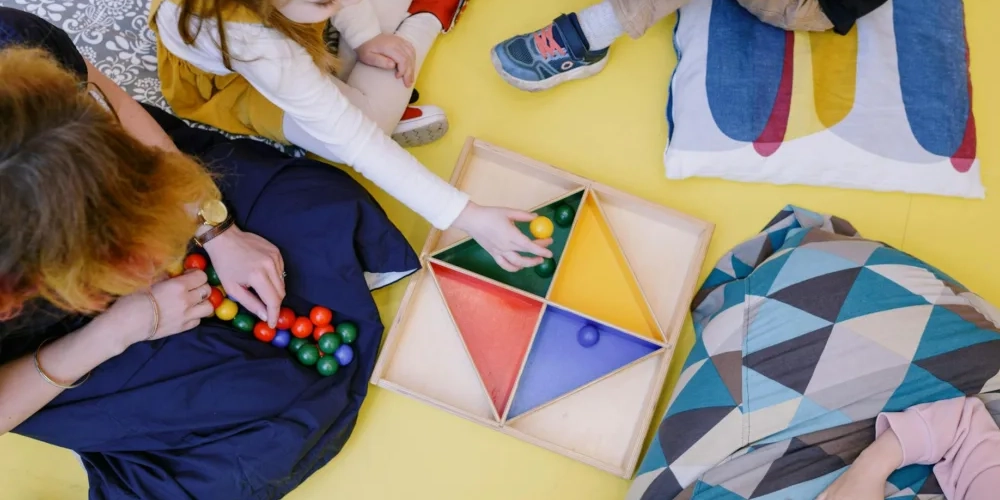
What Are the Disadvantages of the Reggio Emilia Approach?
The Reggio Emilia Approach has been celebrated for its child-centered philosophy and innovative methods, but like every educational model, it comes with challenges. Understanding the disadvantages helps teachers, schools, and families make balanced choices. Below are some of the most common concerns connected with the Reggio Emilia curriculum, assessment practices, classroom environment, and broader implementation.
- High Resource Demands
One of the most frequent criticisms of the Reggio Emilia Approach is that it requires significant resources. Setting up a Reggio Emilia classroom is not as simple as buying a few toys. Teachers need access to open-ended materials, natural elements, quality furniture, and tools for documentation in the Reggio Emilia Approach, such as cameras, panels, and display boards.
This can be particularly challenging for preschools or kindergartens with limited funding. Compared to traditional or Montessori classrooms, a Reggio Emilia environment often requires more time and money to maintain, especially when materials are constantly refreshed to reflect new projects. Schools interested in adopting the Reggio Emilia Approach must prepare for higher startup costs and ongoing investment.
- Heavy Demands on Teacher Time
The role of the teacher in the Reggio Emilia Approach is very different from traditional education. Teachers are not just instructors; they are researchers, collaborators, and documenters. This means they must constantly observe children, take notes, collect samples of work, and reflect with colleagues.
While this practice makes learning visible and supports child-led inquiry, it is also time-intensive. Teachers following the Reggio Emilia curriculum often spend many hours outside of direct classroom teaching preparing documentation and reflecting on children’s progress. For schools with large class sizes or limited staff, this workload can be overwhelming.
- Lack of a Fixed Curriculum
Another disadvantage is the absence of a fixed curriculum. The Reggio Emilia curriculum approach is emergent, meaning it grows from children’s interests. While this fosters deep engagement, it can also create uncertainty. Parents and administrators may worry that important subjects, such as math or literacy, are not being systematically taught.
In countries where education is driven by standardized testing, the Reggio Emilia Approach to early childhood education can be difficult to align with national standards. By contrast, approaches like Montessori or Waldorf provide more clearly defined curricula, which some families find reassuring. This difference often appears in debates like Reggio Emilia vs Montessori or Reggio Emilia vs Waldorf, where curriculum structure is a key point of comparison.
- Assessment Challenges
Assessment is another area where the Reggio Emilia Approach faces criticism. Instead of grades or tests, teachers use documentation—photos, portfolios, and transcripts of conversations—to track learning. While this reflects children’s thinking in a rich way, it is not easily translated into traditional report cards.
Parents who are unfamiliar with Reggio Emilia assessment methods may struggle to understand how their child is progressing. In systems where academic benchmarks are important for entry into primary schools, this difference can create tension. Critics argue that while documentation is meaningful, it may not always meet the expectations of parents or policymakers who value clear, measurable outcomes.
- Inconsistency Across Classrooms
Because the Reggio Emilia Approach is based on local culture, teacher collaboration, and children’s interests, no two classrooms look the same. While this flexibility is often celebrated, it can also lead to inconsistencies. A Reggio Emilia preschool in Italy may look very different from one in Singapore, Australia, or the United States.
This raises questions of quality control. Without a fixed set of materials or a standard curriculum, it is difficult to guarantee that every child receives the same opportunities. Some critics see this as a weakness, especially when comparing with Montessori, which has highly standardized materials and methods.
- Scaling Difficulties
The Reggio Emilia Approach works especially well in small groups where teachers can carefully observe and respond to each child. However, in larger classrooms or schools with limited staff, it becomes harder to maintain this level of individualized attention.
In countries where class sizes are large, implementing the Reggio Emilia philosophy can be challenging. Project-based learning requires space, time, and flexibility—resources that may not always be available. For this reason, many educators argue that while the Reggio Emilia Approach is highly effective in preschools and early childhood centers, it is less practical in primary schools or larger institutions.
- Teacher Training Requirements
Another disadvantage is the need for specialized training. The fundamentals of the Reggio Emilia Approach—such as emergent curriculum, project-based inquiry, and the use of the environment as a “third teacher”—require teachers to unlearn traditional methods. Without proper training, the approach can be misapplied, resulting in classrooms that look child-led but lack depth.
Professional development programs and Reggio Emilia training are not always available everywhere, and they often come with additional costs. This makes it harder for schools in remote or low-income areas to adopt the philosophy fully.
- Cultural and Parental Expectations
Finally, cultural differences play a big role in how the Reggio Emilia Approach is received. In some regions, parents expect early emphasis on academics, structured lessons, and visible achievements. The idea of child-led projects and open-ended exploration may be seen as less rigorous.
This is particularly evident in discussions of the pros and cons of the Reggio Emilia Approach. While many families appreciate its creativity and respect for the child, others may prefer the clarity of Montessori or the strong moral focus of Waldorf. Schools adopting the approach often need to educate parents about its philosophy and long-term benefits.
The Reggio Emilia Approach is admired for its emphasis on creativity, collaboration, and respect for children. Yet its disadvantages—including high resource demands, heavy teacher workload, assessment challenges, and cultural barriers—show that it is not a one-size-fits-all solution.
When comparing Reggio Emilia vs Montessori vs Waldorf, educators must consider not only the strengths but also the limitations. By being realistic about these disadvantages, schools and teachers can decide whether the Reggio Emilia Approach to early childhood education is the right fit for their community.
The Reggio Emilia Classroom Environment
In the Reggio Emilia Approach, the environment acts like a partner in learning—inviting children to explore, talk, build, and represent ideas. Spaces are calm, beautiful, and easy for children to use on their own.
Core principles that guide the space
- Children can reach and choose: open shelves, clear baskets, labels with photos.
- Natural light and natural materials: wood, fabric, plants, mirrors, stones—warm, real textures.
- Visibility and value: documentation panels show thinking; work is displayed at child eye level.
- Flexibility: areas change as projects grow; furniture moves; materials rotate with interest.
- Connection to community: found/recycled items, family contributions, local stories and materials.
Elements you’ll see in a Reggio‑inspired room
| Element | Why it matters in the Reggio Emilia Approach | Simple examples |
|---|---|---|
| Atelier (studio) | Supports the “hundred languages” and project work | Easel, clay, wire, inks; a table with mirrors and light |
| Mini-atelier / making tables | Keeps expression close to daily play | Drawing trays, collage baskets, small weaving frames |
| Project zones | Gives long‑term inquiry a home | A block city that stays; a light & shadow corner |
| Quiet nooks | Self‑regulation and reflection | Cushions, books, soft light, noise buffer |
| Loose parts | Open‑ended building and storytelling | Shells, buttons, tubes, fabric, cardboard pieces |
| Documentation walls | Makes learning visible to children and families | Photos + children’s words; weekly “What we noticed” captions |
| Outdoor link | Extends inquiry and care for nature | Mud kitchen, water run, weather station, garden pots |
While the Reggio Emilia classroom design may look different from school to school, the core goal remains the same: to create a flexible, welcoming space where children can learn independently, collaborate with peers, and express themselves in many ways.
Conclusion
The Reggio Emilia Approach has transformed the way many schools and educators think about early childhood education. By viewing children as capable, curious learners and by treating the environment as a partner in learning, this philosophy offers a rich alternative to more traditional models. Its emphasis on collaboration, creativity, and exploration gives children the freedom to learn through projects, relationships, and real-world experiences.
At the same time, the Reggio Emilia Approach is not without its challenges. It requires time, training, and resources, and it may not align perfectly with every cultural or educational system. Still, many educators believe the benefits outweigh the difficulties, especially in preschool and early childhood settings where flexibility and imagination are so important.
Whether you are a teacher, parent, or school leader, exploring the Reggio Emilia philosophy can open new possibilities for how learning happens. It reminds us that education is not just about delivering information—it is about nurturing curiosity, building community, and respecting children as active participants in their own learning journey.
FAQs
Can Reggio Emilia be applied at home?
Yes, many families adapt the Reggio Emilia approach at home by creating open-ended play spaces, encouraging project-based learning, and valuing children’s questions. While it is not the same as a full classroom, parents can still embrace its philosophy by treating the home as a “third teacher.”
Is it suitable for children with special needs?
The Reggio Emilia approach can be highly supportive for children with special needs because it values individual expression and multiple ways of communication. However, it requires flexibility, resources, and skilled guidance from educators to meet specific needs.
What kind of parents/educators adopt Reggio philosophy?
Parents and educators who value creativity, collaboration, and child-led learning often choose the Reggio Emilia philosophy. It appeals to those who want education to focus on exploration, relationships, and holistic development rather than rigid standards.
Can the Reggio Emilia approach work in different cultures or countries?
Yes, the Reggio Emilia approach has been adapted worldwide. While its roots are in Italy, many schools in the US, Asia, and Europe integrate its philosophy with their own cultural practices. The flexibility of the approach makes it adaptable, though local contexts may require adjustments.
How is Reggio Emilia different from Montessori or Waldorf at home?
Unlike Montessori’s structured materials or Waldorf’s focus on rhythm and imagination, the Reggio Emilia approach emphasizes emergent projects, family collaboration, and the use of everyday materials. Families can borrow elements from each approach, but Reggio stands out for its emphasis on co-learning and documentation.

